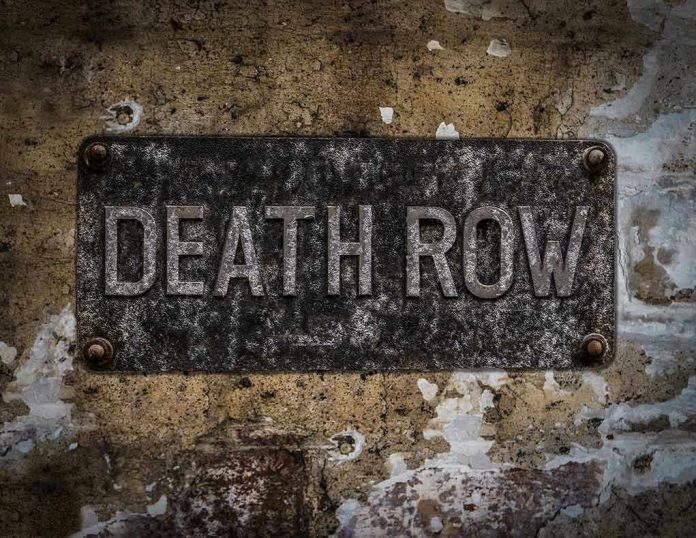
Alabama’s latest execution didn’t just push the boundaries of law—it thrust the nation into a debate over whether state-sanctioned death has crossed a new, unthinkable line.
Story Snapshot
- Anthony Boyd’s execution by nitrogen gas lasted 37 minutes—the longest such event in U.S. history.
- Witnesses described visible suffering, including over 225 gasps for air and possible equipment malfunction.
- Legal and ethical experts, plus dissenting Supreme Court justices, condemned the process as cruel and unusual punishment.
- Alabama’s use of an untested execution method has reignited fierce debate over the future of capital punishment in America.
Alabama’s Experiment: Nitrogen Hypoxia and the New Face of Execution
Anthony Boyd’s final moments will likely echo far beyond Alabama’s death chamber. On October 24, 2025, the state deployed nitrogen hypoxia—a method that suffocates by replacing oxygen with pure nitrogen. The scene wasn’t swift nor silent. Boyd, maintaining his innocence until his death, endured 37 agonizing minutes, gasping more than 225 times, as spiritual advisers and journalists recorded every wrenching moment. This was the longest nitrogen execution yet—a fact that horrifies some, but for Alabama officials, it was simply protocol.
State corrections insisted the process went “according to plan.” Yet the plan itself has attracted censure from legal scholars, human rights groups, and even Supreme Court justices. The contradiction is stark: while state officials tout nitrogen hypoxia as a humane, efficient alternative to lethal injection amid drug shortages, witnesses and experts point out the unprecedented suffering and risk of torture. The gap between protocol and reality has never felt wider.
How Nitrogen Hypoxia Became Alabama’s Answer to Lethal Injection Failures
Alabama’s legislature approved nitrogen hypoxia in 2018, desperate to sidestep the global shortage of lethal injection drugs and a string of botched executions. The method was first tested on Kenneth Smith in January 2024, drawing international attention when Smith convulsed, gasped, and suffered for over 20 minutes. Boyd’s ordeal a year later was even longer, amplifying fears that the “humane” alternative might be more about appearances than actual mercy.
Boyd’s own story complicates the narrative. He initially chose nitrogen hypoxia, only to later challenge the state’s lack of transparency and failure to consider his medical history. His legal team fought the execution all the way to the Supreme Court, arguing not only innocence but the basic right to information about how he would die. Their efforts failed. The state pressed on, backed by a Supreme Court majority that deferred to Alabama’s protocols—over the vehement objections of dissenting justices who compared the ordeal to torture.
The Legal, Medical, and Moral Fault Lines of a New Execution Era
Boyd’s execution has become a flashpoint for long-simmering disputes about the death penalty’s place in modern America. Legal experts argue the method’s novelty and lack of medical precedent make it inherently risky. Alabama declined to provide unredacted execution protocols, raising concerns about informed consent and due process. Medical observers warned that nitrogen hypoxia, never before used in clinical euthanasia or capital punishment outside the U.S., was a leap into the unknown—with Boyd as the unwilling test subject.
The state’s stance is unwavering: nitrogen hypoxia is a necessary workaround, not an experiment. But the facts on the ground undermine that certainty. Observers noted possible mask malfunction and clear signs of prolonged distress. Human rights advocates and the United Nations have called for a halt, labeling the procedure cruel and inhuman. For Boyd and those who watched him die, the clinical language of “protocol” cannot paper over the raw reality of visible suffering.
Why Boyd’s Death Could Change the National Death Penalty Debate Forever
Boyd’s story is more than a one-off tragedy; it is a warning shot for every state grappling with the future of capital punishment. In the short term, his death has triggered immediate calls for independent investigation and a possible legal reckoning over execution protocols. In the longer view, this event may force lawmakers, courts, and the public to confront uncomfortable questions: Is there such a thing as a humane execution? When protocol becomes spectacle, who holds the state accountable?
Pressure is mounting—from legal challenges to grassroots activism—to revisit not just the method of execution, but the moral calculus underlying the death penalty itself. Alabama’s experiment with nitrogen hypoxia has thrust these questions into the spotlight. For a nation that often prefers its executions out of sight and mind, Boyd’s 37 minutes may prove impossible to forget.
Sources:
Death Penalty Information Center
Wikipedia: Execution of Kenneth Eugene Smith



